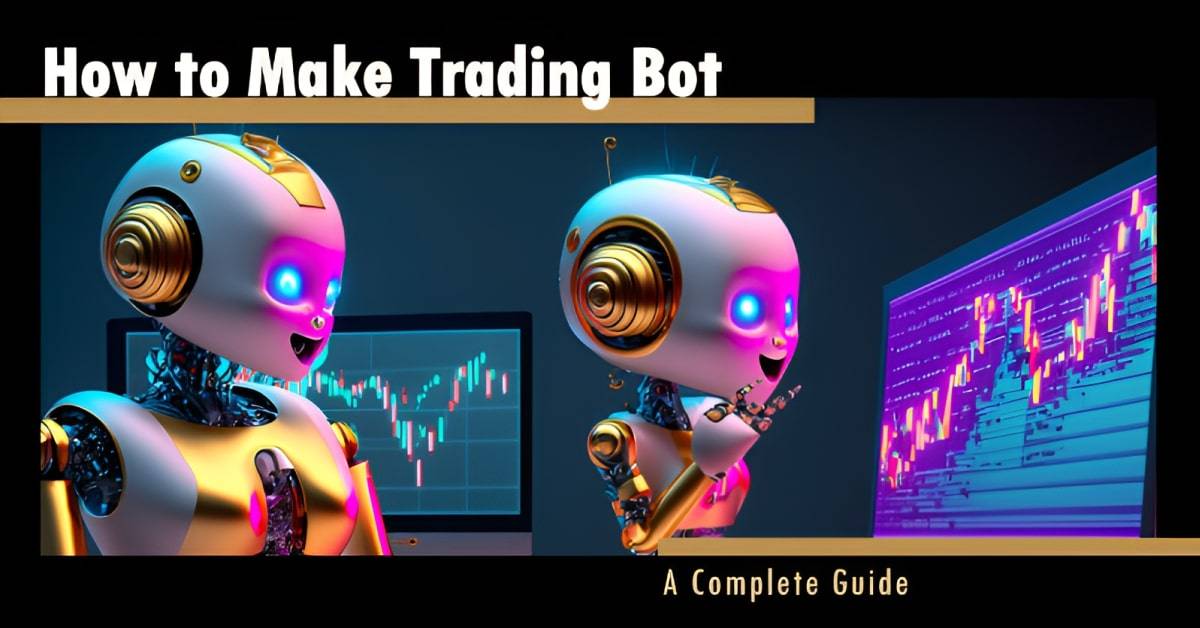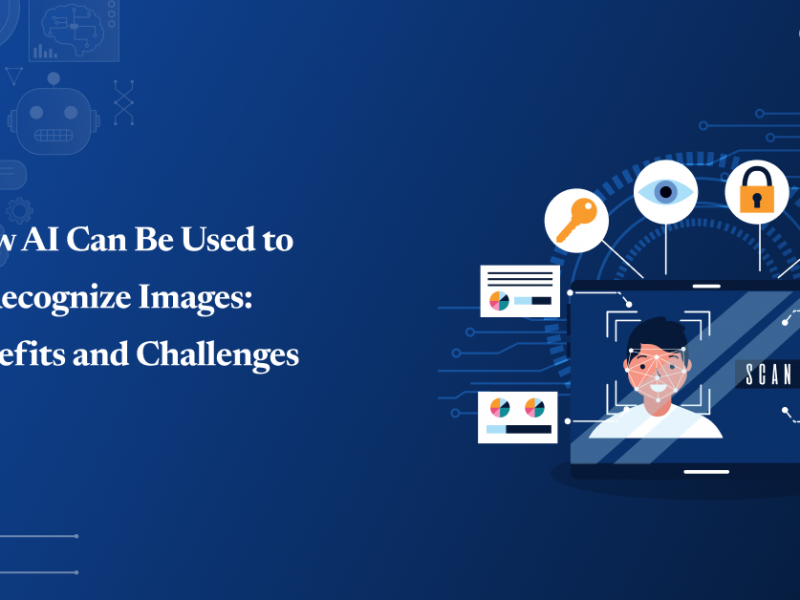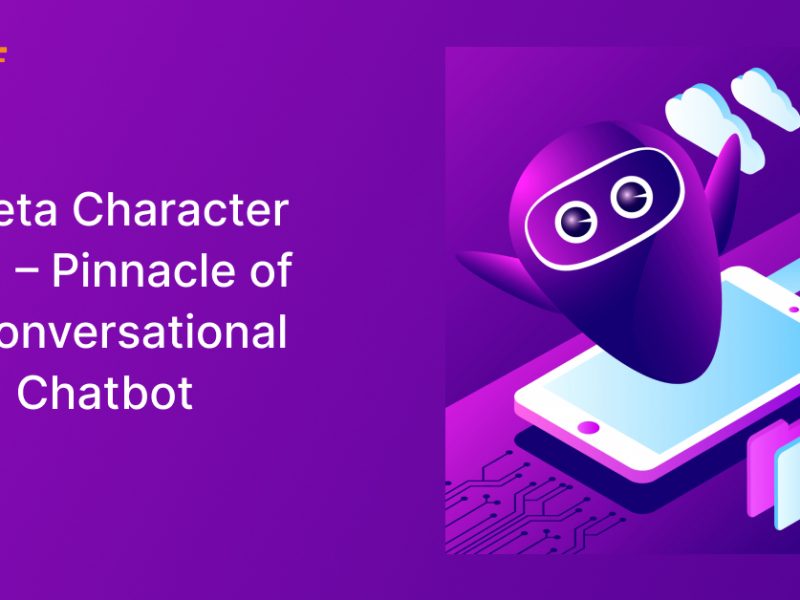Last updated on April 24th, 2024 at 09:02 am
Trading using algorithms has changed the quick-moving world of finance, where milliseconds can make a big difference. Do you want to know how to make trading bot so that you may trade without doing anything? You are in a good location. This comprehensive guide simplifies complex concepts into manageable actions that you may take to complete the whole procedure.
Algorithmic trading bots are computer programs traders that employ to execute their strategies and benefit from market fluctuations. Whether you’re a novice interested in learning more or an experienced trader trying to automate your processes, this blog aims to make algorithmic trading easy to grasp. It is an easy-to-follow guide to make a trading bot that generates revenue for you.
So buckle in, and let’s explore the exciting world of algorithmic trading—where cutting-edge technology and strategic thought strikes. Together, we can complete the trading bot development process and provide the resources you need to take full advantage of automated trading.
What is a Trading Bot?
A trading bot is used on the market to purchase and sell stocks, cryptocurrency, and other financial assets. A computer application makes bargains for you by following certain guidelines. It does not need continual human monitoring.
It’s analogous to a diligent worker who constantly examines market data, identifies particular situations or trends, and then makes decisions depending on what they discover.
Based on price changes, trade volume, or certain technical indicators, you can tell these bots what to do. Traders use them to perform jobs that need to be done repeatedly and make deals at speeds and rates that people can’t handle. It’s like dealing with someone available 24 hours a day, seven days a week.
It is important to remember that trade bots can be useful tools, but they aren’t perfect. Things you don’t expect can happen in the market, and not all tactics work. Users need to carefully plan and keep an eye on their bots to ensure they fit their trade goals and level of risk tolerance.
Features of a Trading Bot
There are different panels to make a trading bot. It is discussed as below:
User Panel
This is where individuals sign up, set their buying preferences, and monitor their wealth while getting real-time updates on trades and market trends. Let’s take a snapshot.
|
Features |
Description |
| Signing up and verifying users |
|
| Dashboard |
|
| Strategy Configuration |
|
| Placing an order |
|
| Managing a portfolio |
|
| Historical Performance |
|
| Notifications |
|
Admin panel
The admin panel is where system admins manage user accounts, ensure rules are followed, and ensure the trade bot platform is safe and works well. Let’s discuss it in details.
| Features |
Description |
| User Management |
|
| Risk Management |
|
| System Monitoring |
|
| Rules and regulations |
|
| Security Measures |
|


Trader Panel
Traders use this panel to run, watch, and improve their automatic trading methods. They can use performance data and risk management tools to help them to make smart choices. Let’s take a closer look.
| Features |
Description |
| Backtesting |
|
| Simulated Trading |
|
| Performance Analytics |
|
| Strategy Marketplace |
|
| Support and Resources |
|
| Integration Options |
|
| Customization |
|
How to Make A Trading Bot?
With the following trading bot development process, the trading bot is technically sound and in line with the trader’s goals and how the market is doing.
Iterative development lets improvements and tweaks be made all the time, which makes the bot more useful in changing financial environments.
Let’s discuss how to make trading bot in details.
Strategy Development
Strategy development is the first step in making a trading bot. Traders and coders work together to make the bot’s rules and conditions. Trend analysis, statistical arbitrage, or machine learning methods are some strategies that can be used based on the goal. The plan must be clear and precise for the next steps to work.
Technology Selection
Picking the right technologies is crucial for making a trading bot work well. The computer language, data storage, and API interaction tools must work with the chosen trades and the strategy. Python is a popular choice because it can be used for many things, and certain tools and packages are designed to meet the needs of algorithmic trade. Trading bot app development company aids to choose the right technology.
Exchange Selection
Choosing the right exchanges is a very important choice. The APIs, fees, and assets offered on each exchange differ. Because the bot works with the selected platforms, it can easily get data, carry out orders, and do other things.
Server Choice
The type of server technology is very important for how well the bot works. Traders must think about delays, processing speed, and dependability. Cloud services like AWS or private computers can be chosen based on the bot’s needs and how it can grow.
Bot Development
Coding the formulas, connecting with certain APIs, and adding risk management features are all parts of developing the trading bot. For this step, you need to know much about the chosen computer language and the complex workings of the financial markets. Hire dedicated developers to effectively develop the trading bot.
Backtesting
The bot goes through much testing before it is used in real markets. Developers can see how well the strategy would have worked in different market conditions by simulating how well the bot would have done in those conditions using historical market data. This step helps improve and perfect the bot’s settings.
Integration With the Trading Platform
The bot must work well with the trading platform that was picked. Connecting to exchanges, handling identity with safe keys, and ensuring communication works well so that data can be retrieved and orders can be carried out in real-time are all part of this.
Deployment And Use
The bot is set up in real markets after it has been tested thoroughly. The traders monitor how it’s doing and make any necessary changes. The bot makes deals based on a plan that was put into it.
Trading Bot Development Techniques
Combining these trading bot development technique helps to create a smart and useful trading bot that can adjust to changes in the market and make trading strategies work better.
Algorithmic Trading Strategies
Make specific programmes that make trade choices automatically based on already set factors. Some common tactics are trend following, moving averages, and mean reversion.
Machine Learning and AI Integration
Look at old data with machine learning models to find patterns or trends. AI can adjust to changing market conditions, which helps the bot make better decisions over time.
Backtesting
Use past market data to test the trade programme and see how well it works. Developers can use this method to fine-tune tactics and see how well the bot would have done in the past.
Risk Management Systems
Strong risk management methods should be used to avoid big losses. It includes putting in place stop-loss orders, position-sizing formulas, and risk factors that change based on how the market is doing.
API Integration and Market Data Feeds
You can get real-time market info by integrating with financial data providers through APIs. So, the trading bot always has the most up-to-date knowledge to help it make smart choices.
How Does the Trading Bot Work?
A selling bot works in several steps, from collecting data to interacting with users. Let’s delve a deep about how trading bot works.
Data Gathering
The first step in the trip is gathering information. Financial news feeds, social media, and, most importantly, real-time market info are some places where the trading bot gets help.
APIs (Application Programming Interfaces) are important because they let the bot connect to platforms and get the most up-to-date price data, trade numbers, and other useful measures.
Strategy Formulation
Once the trading bot has data, it uses automated strategies to make smart trading choices. These tactics are rules and conditions the user or creator has already set. One simple approach could be to buy a certain coin when its price goes above a certain level set by a moving average.
Advanced tactics can be hard to understand because they use machine learning models to look at past data and guess how the market will move in the future.
Backtesting
The bot goes through a backtesting step before it is used in real markets. The next step is to use old market data to model how the bot would have done in the past. It helps writers determine if the plan will work, find any possible problems, and fine-tune the settings for the best results.
API Integration
To make deals, the trading bot must be able to talk to the chosen exchange(s). Integrating an API allows the bot to easily place orders, check account amounts, and get market info. In this step, security is very important because the bot needs to use secure keys to register itself with the exchange’s API. It makes sure that the link is safe.
Real-Time Decision Making
The bot monitors the market in real time once plans are set up, and API links are made. It takes in data and uses rules that have already been set up to decide in a split second whether to buy, sell, or hold assets. During this time, speed is very important because markets can change quickly.
Risk Management
Risk management methods are built into a well-designed trading bot. Setting stop-loss orders to limit possible losses, changing position sizes based on how volatile the market is, and sticking to risk levels that have already been placed are all examples of this.
Traders must be able to control risk to protect their cash effectively.
User Interaction
A simple screen or monitor lets users talk to the trading bot. Here, they can tell the bot what they want, set up trade plans, and monitor how it’s doing. Users are updated on the bot’s actions through notifications like deal execution reports and account updates.
Continuous Improvement
The best trade bots don’t stay the same; they change over time. Developers look at how well the bot works, get user feedback, and then make any necessary changes.
Depending on market trends or user needs, this could mean changing computer strategies, optimizing risk factors, or adding new features.
Advantages of Trading Bots
These trading bot advantages work together to make the buying process easier and more efficient. Traders can use technology to help them make better decisions, lessen the effect of emotional biases, and move through complicated market conditions more quickly and consistently.
Let’s take a closer look on it.
Better efficiency
Trading bots make deals quickly and often, 24 hours a day, seven days a week. This steady watchfulness and quick response to changes in the market make trade more efficient overall. Bots can quickly take advantage of chances or lower risks without waiting.
Elimination of emotions
Trading bots are not affected by feelings like fear or greed like human traders are. They follow reasoning and rules that have already been written into them. It keeps them from making hasty choices that could be bad in the volatile world of financial markets.
Consistency
Trading bots are consistent in how they carry out their plans. They follow the rules set, ensuring the trading strategy is always used. This level of regularity can help make trade more controlled and reliable.
Monitoring Multiple Markets
Bots can keep an eye on multiple markets at the same time. This ability to do more than one thing at once lets traders look for and take advantage of opportunities across many financial tools and markets, which would be hard for a person to do in real-time.
Backtesting and Optimisation
Traders can use old market data for backtesting to see how well their methods have worked in the past. This trading bot development process helps to determine what trade algorithms are good and bad at so they can be improved and made even better before they are used in real markets. It’s an important step for developing and enhancing the plan.
Reduced Human Error
Human traders can make mistakes because they are tired, distracted, or don’t do their maths right. Trading bots are precise and accurate, making mistakes that cost much money and are much less likely. It can make deal performance more effective and less likely to go wrong.
Risks Associated with Trading Bots
It is significant for traders and developers to be aware of these risks and implement risk management approaches. It may consider regular system checks, contingency plans for technical failures, eliminating excessive optimization, considering the flexibility of algorithms, and staying informed regarding market development.
While trading bots provide significant benefits, their successful deployment needs a cautious balance between human oversights and automation.
Let’s delve deeper into the risks related to trading bots.
Technical Failure
Trading bots can have problems with technology. Software bugs, communication issues, or server failures can stop the bot from working, which could cause it to make deals or miss chances that weren’t meant to be made. To lower these risks, you need strong technology equipment and regular upkeep.
Over-Optimization
When a trading bot is fine-tuned too much to previous data, it does very well in past market conditions but badly in new, unknown situations. It is called over-optimization. It can make it hard to adapt to changes in the market, which can lead to bad real-time trade success.
Lack of Flexibility
Automation can make things more efficient, but it can also make things less flexible. Trade bots might not be able to react well to quick changes in the market or trade situations that weren’t planned for in the rules they were set with ahead of time. Being flexible is important for managing markets that change quickly.
Market Risks
The financial markets are naturally unstable, and events that no one saw coming can have a big effect. Changes in politics, the economy, or sudden market shocks can affect prices that aren’t always aligned with what a bot was designed to think. Traders need to be aware of these outside factors that can cause risks the bot can’t control.
Operational Risks
Operational risks include mistakes in data feeds, delays in order processing, and problems with API links to markets. Should any of these operating parts fail, the trading bot may not work as well as it should, which could cost money.
5 Trading Bot Real-life Use Cases
These real-life examples show how trading bots can be used in various ways in the financial markets. They also offer flexibility and the ability to change to different trade methods and market situations.
Let’s look at each of these trading bot real life use cases in more depth:
Trend-Following Bots
Trend-following bots try to find market trends and make money off of them. They look at past price data and statistical signs to figure out the way of the market. The bot will automatically make deals in the direction of a trend once it is found.
For instance, a trend-following bot could be set up to buy a coin when it sees that moving averages or other analytical signs show that the price is rising and staying up.
Arbitrage Bots
Arbitrage bots use the prices of the same object on different markets to make money. The bot finds times when the Cost of an object is lower in one market than in another. This lets it buy low and sell high at the same time.
An arbitrage bot could be used in bitcoin markets where prices can vary between platforms because of things like different liquidity, regional demand, or delays in price changes.
Mean-Reversion Bots
Mean-reversion bots work on the idea that over time, the prices of assets tend to return to their past average. These bots look for times when the Cost of an object is very different from its past average and make moves, hoping the price will return to the mean.
A mean-reversion bot in the stock market might notice when the price is low or high, which means it thinks the price will likely return to its previous average and then make deals based on that information.
News-Based Bots
News-based bots look at social media, news stories, and other sources to determine how people feel about the market. They trade quickly based on breaking news or big events that could affect the prices of assets.
A news-based bot could respond to financial reports, economic data, or events in other countries, making deals instantly based on the most recent information.
High-Frequency Bots
High-frequency bots make a lot of moves very quickly because their delivery speeds are very fast. These bots take advantage of the small structure of the market and small price differences.
High-frequency bots may “make the market” in stock markets by quickly setting and cancelling orders to take advantage of small price gaps and make money from a large number of trades.
Average Cost to Develop A Trading Bot
The price of making a trade bot can change a lot based on things like how complicated it is, what features it needs, and how skilled the people who are making it are.
A simple trade bot with the most important features might cost around $5,000 to $10,000. It would include basic features like integrating market data, carrying out orders, and putting basic strategies into action.
For more complex bots, though, with advanced algorithms, machine learning built in, and many backtesting options, the price can go up to $20,000 or more. The cost of making a high-frequency trade bot can be as high as $100,000 or even more since it needs cutting-edge technology to work quickly.
It’s important to consider the costs that will keep coming up, like maintenance, updates, and possibly connecting to new data sources or exchanges. Customization and adding extra features, such as an easy-to-use interface or risk management tools, can also increase development costs.
It is very important to find a development team with a lot of experience, knowledge of automated trading, and a good grasp of the financial markets.
Even though the initial Cost of making a trading bot might seem high, the chance to make trading more efficient and profitable can make it a good endeavour for serious traders and financial companies.
TechStacks Used in Developing A Trading Bot
This tech mix could differ depending on the development team’s needs, tastes, and skills. Some trade bots may only need a few technologies and tools, but others may need a bigger set if they have advanced features, machine learning, or user interfaces.
| Component |
Technology/Tool |
| Programming Language | JavaScript, Python, C++, Java, or others |
| Data Storage | NoSQL or SQL databases (such as MongoDB and PostgreSQL) |
| API Integration | Exchange APIs (such as RESTful APIs for market data and order implementation) |
| Algorithm Development | Pandas, NumPy (for data analysis), and algorithm libraries |
| Backtesting | Backtrader, QuantConnect, and custom solutions |
| Machine Learning | TensorFlow and PyTorch (for AI-based approaches) |
| Web Development (Optional) | Django and Flask (for user interface and dashboard) |
| Version Control | Git (for collaboration and code versioning) |
| Security | Secure key management and Encryption protocols |
| Development Environment | IDEs like Visual Studio Code and PyCharm |
| Cloud Services (Optional) | AWS, Google Cloud, and Azure for hosting and scalability |
Conclusion
Finally, this full, easy-to-understand guide has given you a complete plan for making your trading bot. We started by learning about trading bots and what they can do for you. We saw how they could be used to automate trading strategies and save you time.
Then, we went over the most important steps for making a trading bot. The first step is to decide on a trade plan and a platform or computer language.
We talked about how important it is to gather and analyze data, focusing on having correct and reliable data sources. Next, we discussed the application stage, focusing on important issues like risk management, order processing, and backtesting.
We stressed throughout the guide how important it is to test the bot thoroughly and handle risks correctly to ensure it works well and properly. Lastly, we gave you some extra tools and tips to help you learn more about trading bot creation and get better at it.
FAQs
What is a trading bot, and why should I consider building one?
A trading bot is a software program that makes making deals in the stock market easier. Building a trading bot can have many benefits, such as the ability to make trades without being affected by human feelings or biases, the possibility of making transactions happen faster, and the ability to test and improve trading strategies.
What technical skills do I need to build a trading bot?
Usually, it would be best if you had a mix of technical skills to build a selling bot. To deal with trading platforms, you must know a lot about computer languages like Python and how to use APIs (Application Computer Interfaces).
Also, learning how to analyze data and understand scientific ideas can help you develop good trade methods.
How do I choose a suitable platform or framework for building my trading bot?
Which tool or system to use depends on your computing skills, the places you want to trade in, and the flexibility you need. You can use Python libraries like Pandas and NumPy, trade sites with bot creation tools built in, or you can start from scratch and use any computer language you want to make your bot.
Where can I find reliable data for backtesting my trading strategies?
For backtesting and confirming your trade methods, you need data that you can trust. You can get past market data in many places, such as financial data companies, coin sites, or specialized data platforms. It is important to ensure the data is clean and correct and includes all the important information, like price, number, and periods.
What are some key considerations for risk management when using a trading bot?
When using a trading bot, it is very important to control your risks properly. Set clear risk guidelines, like take-profit and stop-loss levels, to protect your capital and limit the amount of money you could lose. Keep an eye on and make changes to your bot’s performance regularly.
You might also want to use position size methods to control how much money you put into each trade. It’s also important to know what’s going on in the market and what the news is that could affect how you trade.



Naveen Khanna is the CEO of eBizneeds, a company renowned for its bespoke web and mobile app development. By delivering high-end modern solutions all over the globe, Naveen takes pleasure in sharing his rich experiences and views on emerging technological trends. He has worked in many domains, from education, entertainment, banking, manufacturing, healthcare, and real estate, sharing rich experience in delivering innovative solutions.






